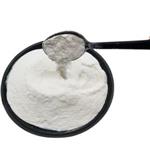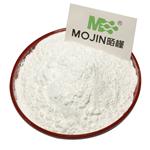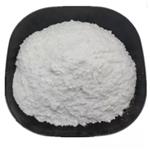Aluminum acetylacetonate is an important organic intermediate (building block) to synthetize substituted acetylacetonate products.
Aluminium (III) acetylacetonate is a white to yellow powder or crystals in appearance. It
is stable and incompatible with strong oxidizing agents.
Alumunium acetylacetonate may be used to prepare transparent superhydrophobic boehmite and silica films by sublimation, to deposit alumunium oxide films by chemical vapor deposition, to deposit alumunium oxide films by chemical vapor deposition, as a catalyst.
Deposition of aluminum, catalyst.
Alumunium acetylacetonate is insoluble in water but soluble in organic solvents. It reacts with alkalis, acids, water at elevated temperatures. It can be prepared by reacting AlCl3 and acetylacetonate.
Exposures to aluminium (III) acetylacetonate cause adverse health effects. Exposures by
inhalation, ingestion, and through skin contact are harmful. It causes irritation effects
to the eyes, skin, and respiratory tract. Aluminium (III) acetylacetonate may release
2,4-pentanedione, which is a suspected teratogen and causes neurological health effects
and harm to the unborn child. However, toxicology is not fully investigated.
Flammability and Explosibility
Non flammable
Recrystallise it several times from *benzene or aqueous MeOH, 216 and 286mn. max [Charles & Pawlikowski J Phys Chem 62 440 1958.] It can be purified by sublimation and has the following solubilities in g percent: *C6H6 35.9 (20o), 47.6 (40o), toluene 15.9 (20o), 22.0 (40o) and acetylacetone 6.6 (20o), 10.4 (40o). [Fernelius & Bryant Inorg Synth V 105 1957, Beilstein 1 IV 3668.]



